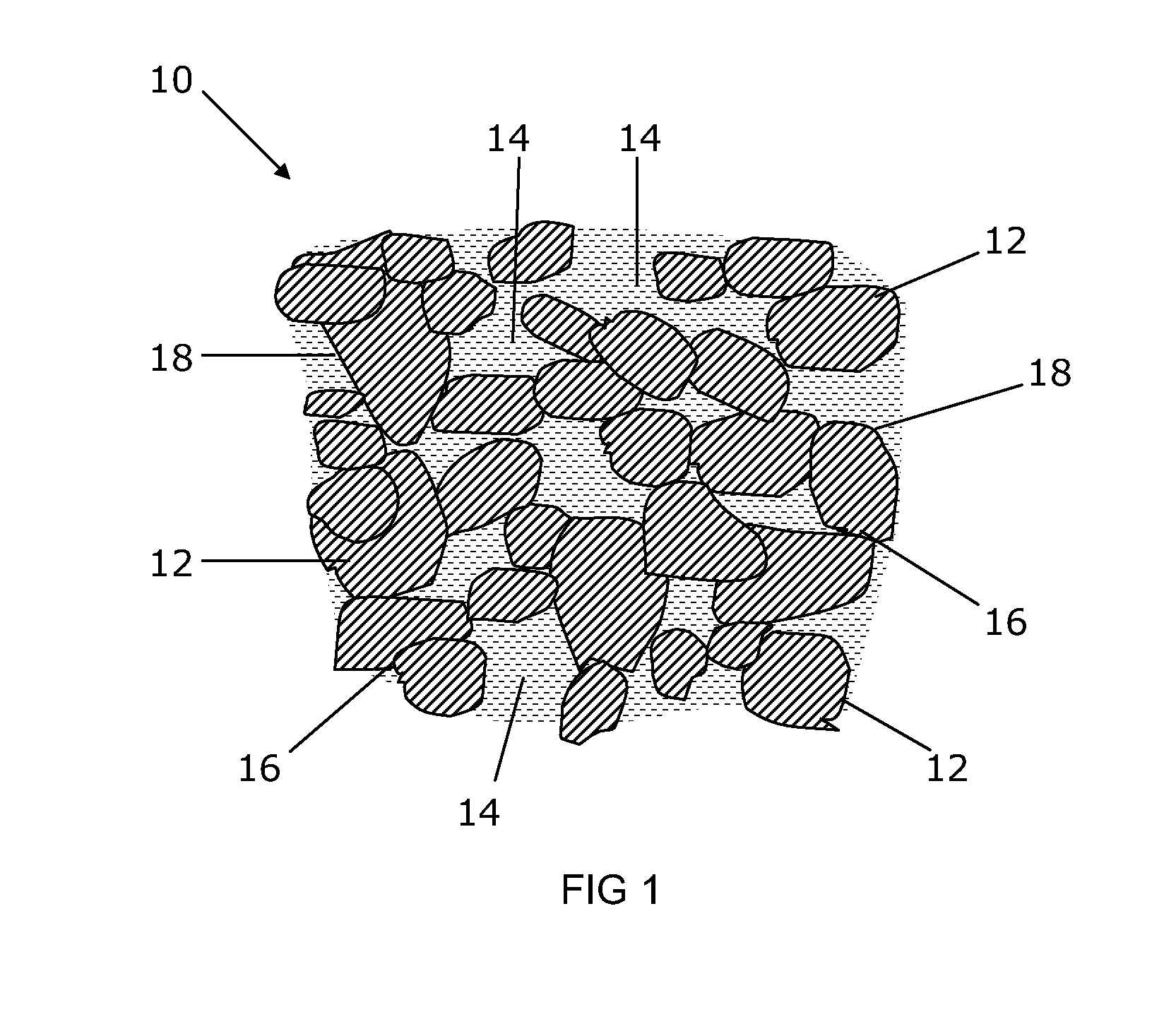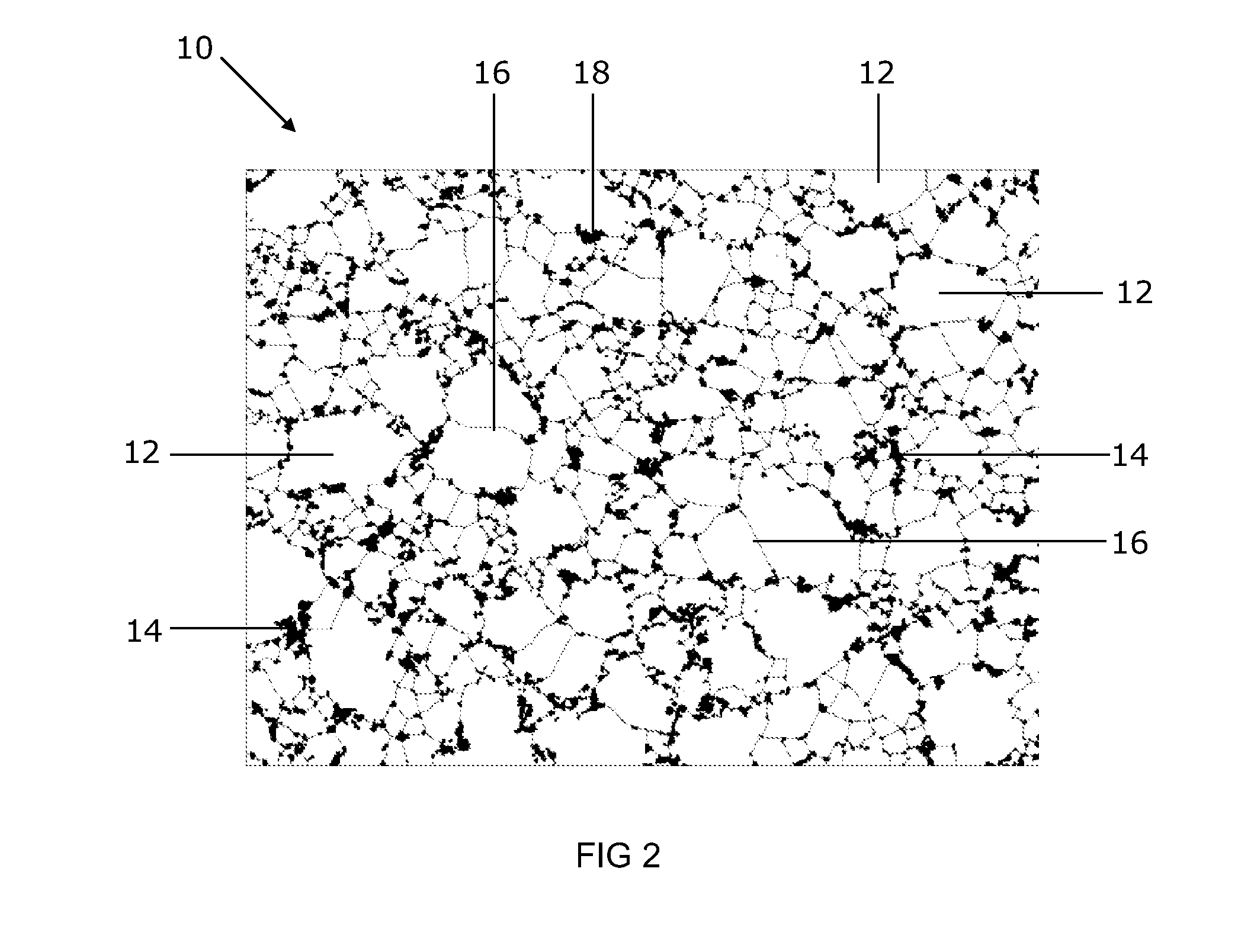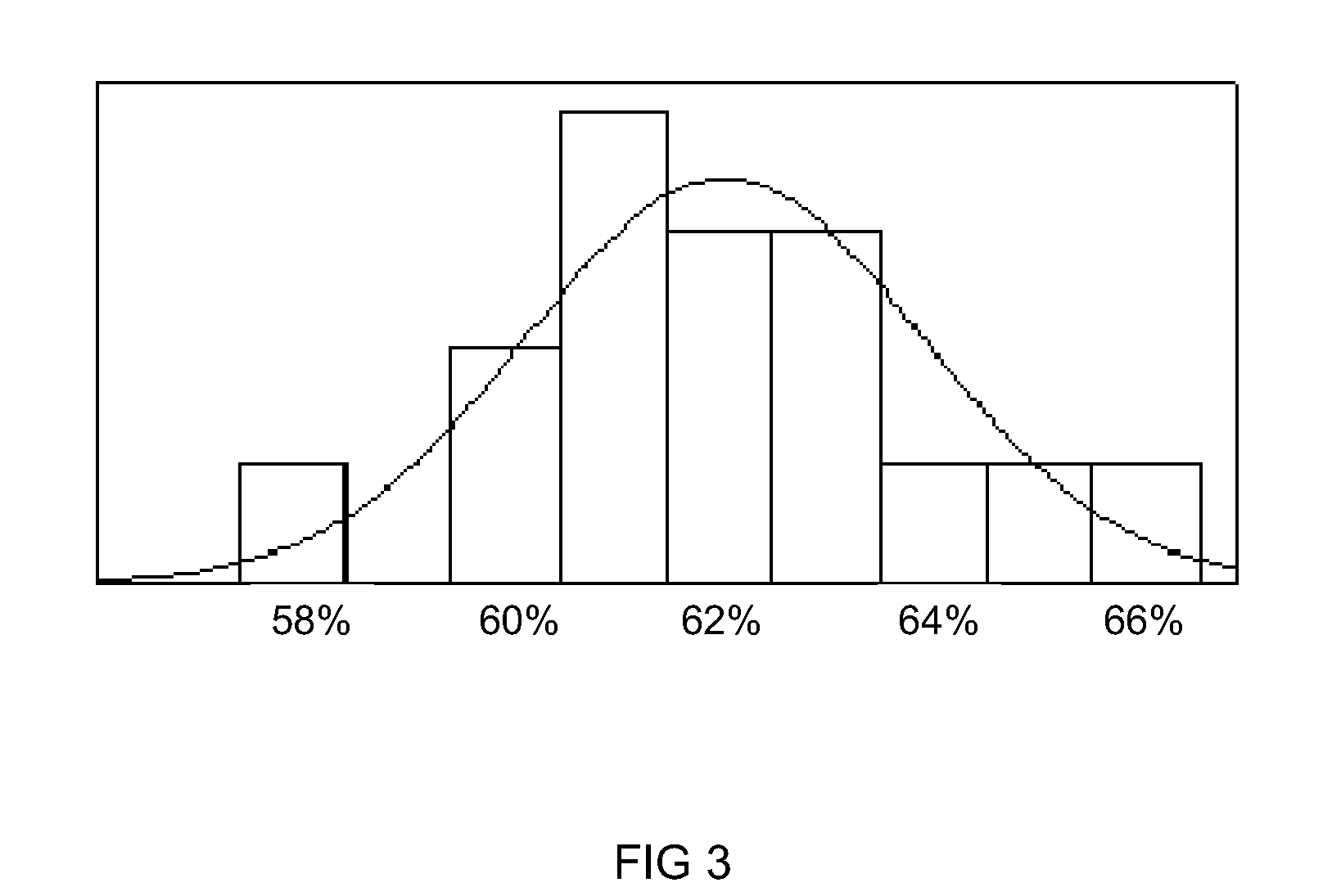Polycrystalline diamond
a technology of polycrystalline diamonds and diamonds, applied in the field of polycrystalline diamonds, can solve the problems of deterioration of mechanical properties of pcd materials, abrasion resistance, hardness and strength,
- Summary
- Abstract
- Description
- Claims
- Application Information
AI Technical Summary
Benefits of technology
Problems solved by technology
Method used
Image
Examples
example 1
[0072]An aggregated mass of diamond grains having a mean size of about 8 microns was formed by blending diamond powder from two sources having respective mean grain sizes in the range from about 1 micron to about 4 microns and in the range from about 7 microns to about 15 microns. The blended diamond grains were treated in acid to remove surface impurities that may have been present. Vanadium carbide (VC) powder and cobalt (Co) powder were introduced into the diamond powder by blending particles of VC and Co with the diamond powder using a planetary ball mill. The mean size of the VC particles was about 4 microns and the content of the VC in the aggregated mass was about 3 weight percent. The aggregated mass was then formed into a layer on a substrate comprising Co-cemented tungsten carbide (WC) and encapsulated within a capsule for an ultra-high pressure furnace to form a pre-sinter assembly, which was then out-gassed in a vacuum to remove surface impurities from the diamond grains...
example 3
[0082]Test and control PCD material samples were prepared using sintering pressures of 6.8 GPa and 5.5 GPa, respectively. In all other respects the test and control samples were made in the same way. Raw material diamond powder was prepared by blending diamond grains from three sources, each source having a different average grain size distribution. The size distribution of the grains within the resulting blended powder had the size distribution characteristic that 9.8 weight percent of the grains had average grain size less than 5 microns, 7.6 weight percent of the grains had average size in the range from 5 microns to 10 microns, and 82.6 weight percent of the grains had average grain size greater than 10 microns. The blended diamond grains had an average size of approximately 20 micron.
[0083]Cobalt and tin were deposited onto the surfaces of the diamond grains by means of a method including depositing cobalt and tin oxides onto the surfaces from an aqueous solution. The cobalt-ti...
example 4
[0096]Several samples of Co-Sn-based PCD sintered onto a cemented carbide substrate were prepared. In each case, tin powder was pre-reacted with cobalt metal powder to produce a CoSn alloy / intermetallic of specific atomic ratio 1:1. This pre-reacted source was then introduced into an unsintered diamond powder mass by either pre-synthesis admixing or in situ infiltration. The 1:1 CoSn pre-reacted powder mixture was prepared by milling the Co and Sn powders together in a planetary ball mill. The powder mixture was then heat-treated in a vacuum furnace (600 degrees centigrade to 800 degrees centigrade) to manufacture reacted CoSn material. This pre-reacted material was then further crushed / milled to break down agglomerates and reduce the grain size. The diamond powder size distribution had an average grain size of less than about 10 microns. A chosen amount of this CoSn material (expressed as a weight percent of the diamond powder mass) was then brought into contact with the unsintered...
PUM
| Property | Measurement | Unit |
|---|---|---|
| size | aaaaa | aaaaa |
| mean size | aaaaa | aaaaa |
| mean interstitial size | aaaaa | aaaaa |
Abstract
Description
Claims
Application Information
 Login to View More
Login to View More - R&D
- Intellectual Property
- Life Sciences
- Materials
- Tech Scout
- Unparalleled Data Quality
- Higher Quality Content
- 60% Fewer Hallucinations
Browse by: Latest US Patents, China's latest patents, Technical Efficacy Thesaurus, Application Domain, Technology Topic, Popular Technical Reports.
© 2025 PatSnap. All rights reserved.Legal|Privacy policy|Modern Slavery Act Transparency Statement|Sitemap|About US| Contact US: help@patsnap.com



